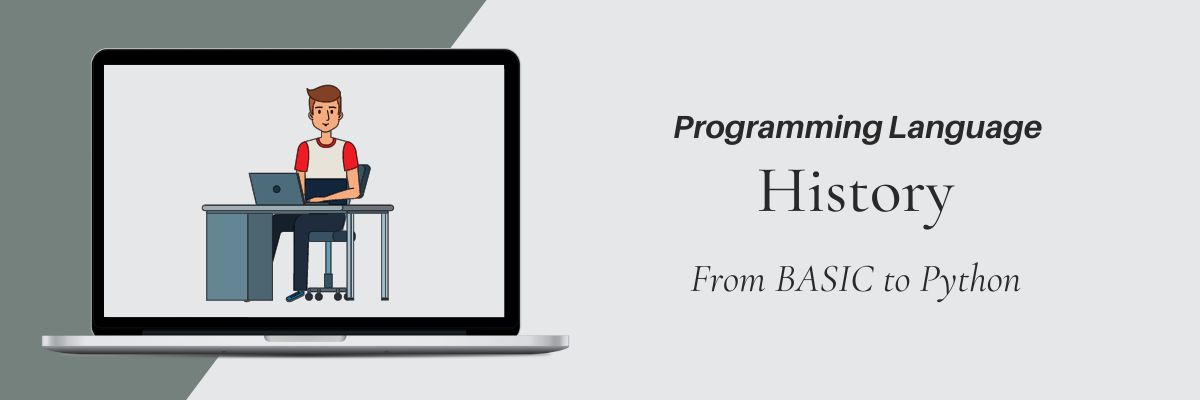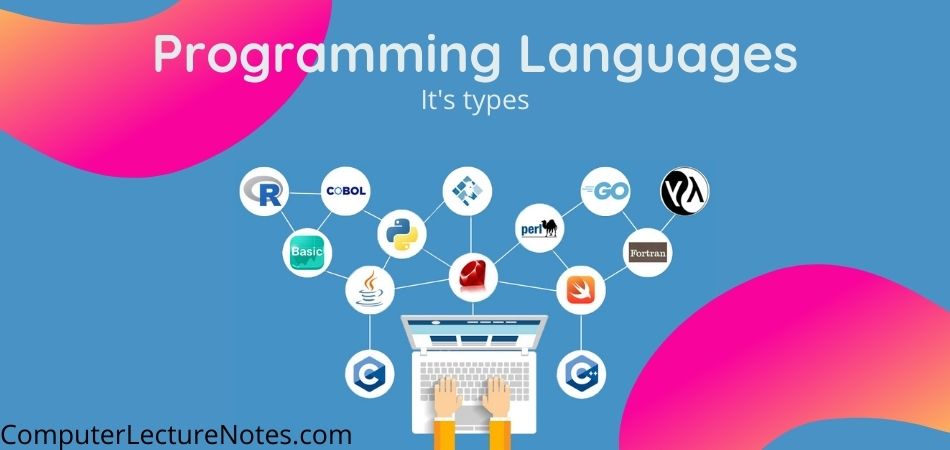Computer programming is the process of writing and running programs. Programs are written in a programming language, which is a set of instructions for a computer. Programming languages are used to create applications that perform specific tasks.
What is Programming Language?
Programming languages are a crucial part of software development. They allow developers to communicate with computers in a textual format and create instructions for the computer to follow. There are many different programming languages, but all share some standard features. First and foremost, programming languages are designed to be concise and easy to read. They typically have a small number of keywords that define the language’s structure and operations while also providing support for complex expressions and functions. Additionally, programming languages allow developers to control how the computer executes its code.
Introduction
Programming languages are a way to communicate instructions to a computer. They allow computer programmers to write code that tells the computer what to do. Programming languages come in wide different varieties, with different purposes and capabilities. Some common programming languages include C++, Java, and Python.
History of programming languages
Programming languages have a long and complex history. They started as simple devices that allowed people to write code faster than they could type it. But over time, programming languages have evolved into powerful tools that will enable users to create sophisticated applications and systems.

The first programming language was created in 1843 by Ada Lovelace, an English mathematician, and writer. She developed the first algorithm for Charles Babbage’s analytical engine.
Let us see some of the most popular old programming languages. Some of them are still used by developers
1. BASIC
Dartmouth College professor William Brainerd Harris created BASIC in 1964. He wanted to create a language that would allow students to program computers without learning to use a computer’s operating system. BASIC was designed to be simple enough for beginners while still being powerful enough for advanced users. In 1965, he published his first book, “Introduction to Programming” where he introduced the world to what we know today as BASIC.
2. C
C was developed at Bell Labs in 1969 by Dennis Ritchie, Ken Thompson, and Brian Kernighan. It was initially known as B (Bell) Language before being renamed C. C was designed to make coding more accessible, faster, and more efficient than previous languages. C is considered one of the most popular programming languages due to its simplicity and ease of use.
3. COBOL
Kenneth E. Iverson created COBOL in 1959. He wanted to create something that could help businesses manage their data efficiently. COBOL stands for Common Business-Oriented Language. COBOL is mainly used for business applications.
4. FORTRAN
John Backus created FORTRAN at IBM in 1958. He wanted to make an easy way to code numerical algorithms. FORTRAN was designed to be a high-level language that allowed programmers to write programs logically.
5. Pascal
Niklaus Wirth created Pascal at ETH Zurich in 1967. He wanted to create the perfect language for teaching programming concepts. Pascal was designed to be easy to understand and implement.
Today, dozens of different programming languages are available, each with unique features and capabilities. Programmers use these languages to create simple scripts for complex software programs. We may even see more programming languages developed specifically for AI and machine learning applications in the future.
Programming Language Paradigm
A programming paradigm is an approach to addressing problems using some programming language; it can also be known as a way to address issues using tools and techniques available to us within a particular framework.

We can divide the Programming Paradigm into the following types
- Imperative Programming Language
- Procedural Programming (C, Fortran, Basic)
- Object Oriented Programming (C++, Java, Python, Ruby)
- Parallel Processing Approach (NESL, C/C++)
- Declarative Programming Language
- Logic Programming Paradigm (Prolog)
- Functional Programming (JavaScript, Scala, Erlang)
- Database Processing Approach (SQL)
Programming language can also be divided into two types on the basis of how they are processed or translated, which are given below
- Compiler Based
- Interpreter based
If you want to know about what is interpreter and compiler you must see this post.
Imperative Programming
Imperative programming is a style of programming in which the programmer explicitly specifies the order of execution of instructions. Critical programs are procedural, but their structure is defined using commands rather than procedures.
Procedural Programming
Procedural programming is a programming language in which the programmer uses statements to specify the order in which operations are to be carried out.
Object Oriented Programming Language
Object Oriented Programming Language is a programming language that uses objects to create code.
The goal of OOPL is to make the process of programming more accessible. It does this by grouping data and methods together in a logical way. This reduces the time it takes for programmers to find what they need and can also be used for debugging purposes.
Objects are the building blocks of OOPL. They are a package containing data and methods related to an object. The most common type of object in OOPL is a class, a blueprint for an object with data fields, methods, and behaviors.
Declarative Programming
Declarative programming is a programming paradigm in which the programmer describes what should happen, not how to make it happen. Declarative programming is sometimes referred to as configuration programming.
Logic Programming
Logic programming is a programming paradigm based on the idea of logical inference. Programs are expressed as clauses, each consisting of a condition and a conclusion. Rules are combined using unification.
Functional Programming
Functional programming is a programming paradigm that emphasizes the functional aspects of computation. A program’s behavior is specified by its side effects rather than its control flow logic. Functions are first-class citizens in functional languages, meaning they may be passed around freely without restriction.
Types of programming languages
1. C++
C++ is a general-purpose, multi-paradigm, object-oriented, compiled, high-level programming language. It was developed at Bell Labs by Bjarne Stroustrup between 1979 and 1983. C++ is a superset of C and adds object-oriented features, exception handling, templates, namespaces, dynamic memory allocation, automatic storage management, and generic programming. C++11 added lambda expressions, auto type deduction, uniform initialization syntax, move semantics, and many other features. C++14 added modules, inline assembly, and const expr.
2. Java
Java (originally called Bytecode) is a general purpose, garbage collected, class-based, interpreted, object-oriented programming language. It was initially designed and developed by James Gosling at Sun Microsystems and released in 1995. Java is a trademark of Oracle Corporation. Java is a superset of the C programming language, adding object orientation, classes, interfaces, generics, annotations, enums, exceptions, reflection, and much more. Java 8 added lambdas, streams, and default methods.
3. Python
Python is a general-purpose scripting language focusing on readability, code elegance, and conciseness. It was created by Guido van Rossum while working at CWI in 1990. Python is open-source software and is free to use under the GNU General Public License version 2. Python is a superset of Perl 5, adding regular expression matching, string formatting, and Unicode support. Python 3 added generators, list comprehensions, dictionary comprehensions, set literals, and many other changes.
4. Ruby
Ruby is a general-purpose dynamic object-oriented scripting language. It was created by Yukihiro Matsumoto and David Flanagan while working at NOLA Software in Japan in 1993. Ruby is open-source software and free to use under the MIT license. Ruby is a superset of Smalltalk, adding blocks, symbols, and enumerations. Ruby 1.9 added modules, threads, and RDoc documentation.
5. JavaScript
JavaScript is a client-side scripting language. It is included in web browsers and is used to add interactivity to web pages. It was created by Brendan Eich while working at Netscape Communications in 1995. JavaScript is open-source software and distributed under the Mozilla Public License. JavaScript is a superset of ECMAScript, adding function declarations, array destructuring, and let/const bindings.
6. Go
Go is a concurrent, statically typed, compiled, garbage collected programming language. It was created at Google in 2009 by Robert Griesemer. Go is open source software and freely available under the Apache 2.0 license. Go is a superset of D, adding channels, goroutines, select statements, and maps. Go 1.8 added ranges, struct literals, and built-in functions.
7. Perl Perl is a general-purpose, context-free, interpreted, dynamic programming language. It was developed in 1987 by Larry Wall.
8. PHP
PHP is a server-side scripting language. Rasmus Lerdorf developed it while he worked at Interwoven in 1994. PHP is open source software and licensed under the PHP license. PHP is a superset of HTML, adding tags, attributes, and event handlers. PHP 4 added objects, closures, and namespaces. PHP 5 added anonymous functions, variable variables, and lexical scoping.




